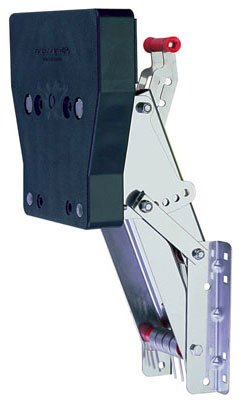An outboard could be a big help as a get-home engine or not, depending on the situation of one's breakdown.
I've related this in the past----- A long-time friend with a steel-hull deFever (42 or 44 feet, I don't recall which) had a log barfed up from the depths of one of the passes in BC he was traversing just after slack current. The log jammed between one of the prop shafts and the hull in such a way that it kept the rudders from moving. So even though he had a second engine he could not maneuver.
The current, while near slack, was nevertheless slowly carrying the boat toward the cliffs. His attempts to free the log with a pike pole were unsuccessful so he launched their shoreboat which was a 15 or 16 foot Boston Whaler with a 40 or 50 hp engine on it. The boat was kept on stern davits so was easy to get in the water quickly.
Despite the relatively weak current, with full power on the outboard the only thing he could do was arrest the boat's movement toward the cliff. But the current was growing stronger and it wasn't long before even at full power both boats were moving slowly toward the cliff.
Realizing there was nothing he could do to prevent the deFever from being carried into the rocks he told his wife to prepare to abandon the boat and when she was ready he would release the line between the Whaler and the deFever and come get her.
So in these waters, at any rate, with the strong tidal currents we contend with most of the time, whatever outboard one selected to use as a potential get-home motor would need to be capable of moving the boat in the face of an adverse current. Not normally as strong as what my friend was dealing with, but three to six knots is not uncommon even farther south here in the San Juans and Gulf Islands and it can go much faster than that in the narrow bits.
Our Livingston dinghy has a 4hp outboard. If we lashed the dinghy to the side of the GB that motor at full power would move our 30,000 pound boat. And if the motor and gas held out, it could conceivably propel us to a harbor or anchorage. BUT.... not in the face of any sort of current at all. Or wind, for that matter.
And one has to keep in mind the power/speed requirement necessary to maneuver the boat if the waves kick up. We all know how easily waves can shove boats like most of us have around and it takes rudder authority to counter that. A boat like ours moving at a knot or two with a little dinghy motor is going to have almost no rudder authority at all. Probably be okay iif we're crossing a mill pond, not so much out in a bay or the Strait of Georgia in a twenty knot wind.
So I think an outboard could be a practical get-home engine but it would have to be sized for both the boat AND the kind of conditions the boat might get into. And that, as I learned from my friend's experience, can require a much more powerful (and heavy) outboard than one might think.
To our way of thinking, a FAR better get-home solution than a big outboard capable of moving our boat in a maneuverable way in the conditions we are likely to encounter up here, is a second FL120 under the floor.

We've needed that engine four times so far, and each of those time an outboard of the size we would tend to have on this boat for a dinghy/shoreboat motor (10-15hp) wouldn't have cut it.


